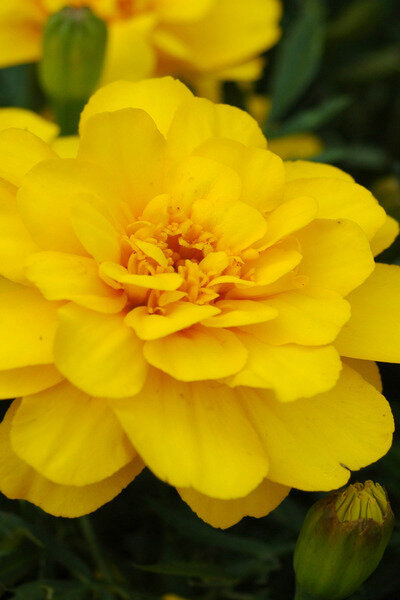French marigolds: There are no better annuals.
Loading...
In late fall it took several nights of temperatures in the 20s to zap the marigolds. Marigolds are among my favorite annuals — perhaps my very favorite— because they are handsome and easy to grow. And they bloom from June to November, even in Vermont.
I keep reading that marigolds are susceptible to wilt and stem rot, leaf spot, botrytis blight, aster yellows virus, spider mites, Japanese beetles, and slugs, but not in my garden.
Better still, marigolds are allelopathic [PDF] and produce a chemical that reduces root-knot nematodes.
French marigolds aren't French
But I grow marigolds for pleasure, not for their nematode-suppressing qualities. The types I like are French marigolds, Tagetes patula. As is frequent with the common names of plants, French marigolds are not French, just as the evening primrose isn't a primrose, and creeping zinnia isn’t a zinnia.
French marigolds are Mexican, their seeds were carted to Europe by the Spanish in the 1500s, then transported to France. After the French and others fussied them up, marigolds made their way back to our gardens. Nearly all are compact, well-branched plants, six to 12 inches tall. Most cultivars produce double flowers, but there also are singles, such as ‘Scarlet Starlet’, which has gold centers and bronze-red petals edged in gold.
American breeders have worked overtime to invent new marigold cultivars. There are scores to choose from, so many that it’s daunting for the home gardener. For starts, you can’t go wrong with anything with Bonanza or Durango in its name, two widely available marigold series from PanAmerican Seeds..
The people at W. Atlee Burpee & Co. are especially invested in marigolds, which were a passion of David Burpee, son of founder W. Atlee. In 1939, the company produced ‘Burpee Red & Gold’, the first hybrid marigold
Fragrance -- yes or no
Two years earlier, it released ‘Crown of Gold’, the first odorless marigold. Fragrance has been a thorn in the marigold’s side for centuries: The English herbalist John Parkinson (1567–1650) wrote that the flower was “pleasant to the eye, and not to any other sense.”
‘Crown of Gold’ wasn’t a hit, so apparently I’m not the only gardener who isn’t offended by the smell of marigolds.
Neither was the late Illinois senator Everett Dirksen, who never missed an opportunity to fill the pages of the Congressional Record with pleas to make the marigold our national flower. Marigolds lost to the rose, alas, but they continue, as Sen. Dirksen phrased it, “tossing their heads in the sunshine and giving a glow to the entire landscape.”
-----
Karan Davis Cutler is one of more than a dozen garden experts who blog regularly at Diggin’ It. To read more by Karan, click here. She's a former magazine editor and newspaper columnist and the author of scores of garden articles and more than a dozen books, including “Burpee -- The Complete Flower Gardener” and “Herb Gardening for Dummies.” Karan now struggles to garden in the unyieldingly dense clay of Addison County, Vt., on the shore of Lake Champlain, where she is working on a book about gardening to attract birds and other wildlife.






